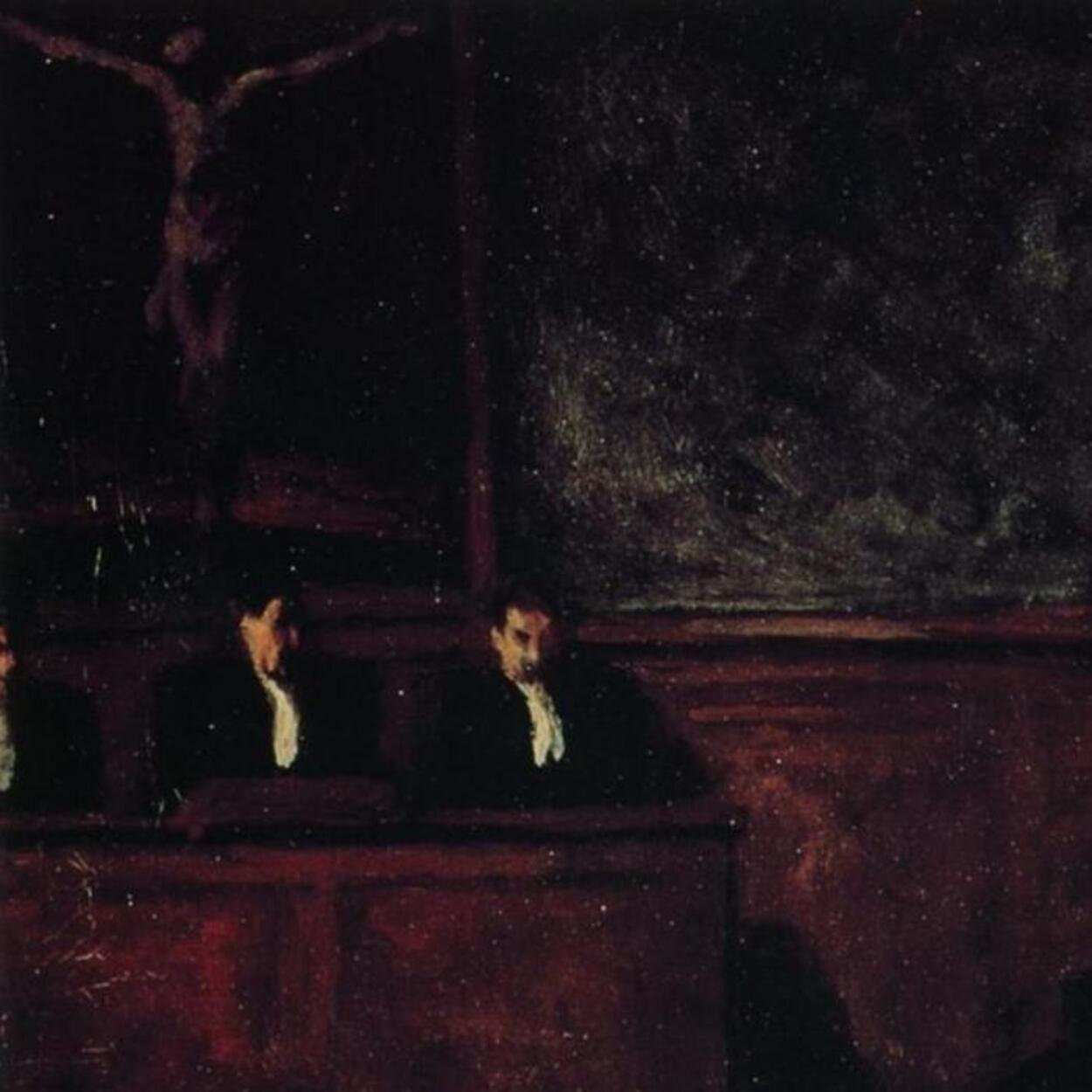My good friends Jeff Bennion and Rebecca Taylor have recently written about the state of research for gender transition medicine for minors. To summarize, the consensus has settled that hormone replacement therapies and gender-affirming surgeries for minors are bad medicine.
There remain some ideologically professional organizations that have not yet adopted the new consensus, including powerful ones such as the American Medical Association. But the overall trend is clear.
Some states, such as Tennessee, have passed laws banning these kinds of medical care. Yesterday, June 25, 2024, the Supreme Court agreed to hear a case challenging the Tennessee Law. The transgender movement is one expression of this religious movement.
In the Summer of 2023, I joined a series of articles positing that the West was seeing the rise of a new religion. Since that time, I’ve come to refer to this as “the religion of the self.” The religion of the self centers on each person’s own understanding of their psychological core. The greatest good in this religion is actualizing that psychological core into reality. While this religion does not have the formal structure of religion that we are accustomed to, it does follow many of the familiar patterns of the early development of religious systems of belief throughout world history.
The transgender movement is one expression of this religious movement. It relies on dramatic metaphysical claims such as that a biological man is, in fact, a woman. By defining truth as our understanding of our own psyche, the religion of the self provides the philosophical grounding necessary for these claims. The new name and social transition rituals that derive from this philosophy find counterparts in many religious traditions.
So what happens when medical science says that hormone and surgical transitions for teenagers are harmful, but a religion has arisen that believes the transition of the outer self into the vision of the inner self is the greatest good?
Free Exercise of Religion
Let’s start by making it clear that when it comes to adults, the free exercise of religion pretty well guarantees the right to perform hormonal or surgical transitions.
Body modifications, such as tattoos or piercings, are part of religious rituals in Hinduism, Buddhism, and Wicca. Case law has even guaranteed tattoo parlors the right to operate.
Surgical transition is, of course, much more invasive, but even on this front, there is some precedence. The Synanon, a new religious movement active from the 1950s to 1970s, mandated some followers to engage in vasectomies.
But most importantly, surgical sterilization is legal for adults in the United States. Having a procedure be legal for non-religious reasons but illegal for the rationale of the religion of the self would violate our most basic tenets of religious fairness.
Adults who choose to undergo gender transition procedures in order to align their outer self with their vision of their psychological core as dictated by their religious beliefs are constitutionally protected.
Religion and Kids
However, the new research is focused much more specifically on children. The constitutional landscape for children and the free exercise of religion is much more nuanced. Let’s look at the landscape around medical interventions for children, particularly when they intersect with religious freedom laws.
On one end, you have male circumcision. Male circumcision does have long-term negative effects, such as reduced sexual sensation. But these effects are generally mild, the procedure involves very little risk, and some doctors believe there may be an upside to hygiene.
Still, there have been attempts to make the procedure illegal. The most notable attempt was in San Francisco in 2011. Ultimately, however, the male circumcision ban was stopped for unrelated legal reasons. California soon passed a law preventing local governments from passing bans against male circumcision, citing parental rights to make religious decisions for their children. So, on one end of the spectrum, you have procedures with mild side effects that are protected for religious reasons.
On the other end of this spectrum, you have female genital mutilation (FGM). FGM is universally condemned in the medical community. The negative effects on women are much greater and long-lasting than the effects of circumcision on men. FGM is illegal across the United States and most of Europe, regardless of whether the girl or her parents consented to the procedure. There is no exception for religious reasons.

In one case, lawyers were planning on challenging the bans on freedom of religion grounds but ultimately did not. Erwin Chemerinsky, a leading constitutional Law Scholar, told the Detroit Free Press about the freedom of religion argument, “It is hard for me to imagine any court accepting the religious freedom defense given the harm that’s being dealt in this case. It is a losing argument. You don’t have the right to impose harm on others in practicing your religion.”
Between these two poles, you have a variety of cases, and judges tend to consider a number of factors:
- What is the opinion of the child, and is that child mature enough to make the decision?
- How severe is the harm done, and is that harm reversible?
- How effective would the procedure be?
Let’s look at a few example cases and how judges balanced those factors.
The first is the case of E.G. She was a 17-year-old Jehovah’s Witness who decided not to get a blood transfusion to treat her leukemia.
The judge in the case considered that E.G. was considered mature for her age—psychologists said she had the maturity of an 18-21-year-old. E.G. also understood her religious beliefs well. Of course, her decision to not take treatment would not be reversible, but because the judge also considered that even if E.G. did take the treatment, the survival rate was only 20%. In weighing these factors, the court found E.G. had the right to refuse the blood transfusion.
The second is the case of Daniel Hauser. Hauser was only 13 years old. He practiced a Native American religious belief called Nemenhah. Hauser was not able to articulate his beliefs well, and his reading capabilities were put below a fifth-grade level. In addition, doctors said he had a negligible chance of survival for five years without the treatment but an 80% plus chance of survival with the treatment. In this case, the court found that Hauser (and his parents) did not have the right to turn down the treatment.
The third case involves Shannon Nixon. Shannon died at 16 years old because her diabetic ketoacidosis was not treated. Her parents believed the treatment was in opposition to their religious views as members of the Faith Tabernacle Church. In this case, the parents were tried for child endangerment, and they made the claim they were acting in accordance with their child’s religious wishes. In this case, the judge found that because the consequences of not taking action—death—were so severe, it was not something that minors could consent to.
Children in the Religion of the Self
Children who have been raised in the religion of the self may seek to obtain medical procedures that the latest medical consensus concludes are harmful, much like FGM. Medical transitioning does not protect children from suicide.
Let’s look at the same factors these judges have considered.
Maturity of the Child. This would largely need to be dealt with on a case-by-case basis. However, there is significant research to suggest that those who have gender dysmorphia have developmental disorders such as ASD at a higher rate than the population at large.
Severity of the Harm. One of the most important findings of the Cass report is that medical transitioning does not protect children from suicide. This procedure does not alleviate another risk. Those who describe teenage medical transitioning as “life-saving care” are misinformed about the research. However, surgical transitioning does similar but much more severe harm than FGM, and hormonal transitioning can cause permanent harm, such as sterilizing the child.
Effectiveness of the Procedure. Various studies suggest that gender dysphoria stops without medical intervention in 60-90% of cases. Between this and the conclusion on suicide, it appears that medical transition in the teenage years has little medical purpose. Rather, the purpose is a religious one of aligning the outer presentation of the self with the inner conception of the self.
Based on these factors, it appears that transgender transitioning is further outside the acceptable parameters than even FGM. Altogether, it seems likely that challenges to potential laws against medical transitioning for children would survive any objection to the religious rights of those who practice the religion of the self.
While the religion of the self is a new religious movement that is still forming, it is a legitimate philosophical worldview that deserves the same deference and respect in our law as any other religious worldview. But it is not a superior worldview that deserves additional deference. In the same way, the courts have limited the religious freedom of Jehovah’s Witnesses, Christian Scientists, and Native Americans when those practices could harm children, it is reasonable, based on the developing consensus, for states to ban medical transitioning for children as well.
Of course, the litigation now headed to the Supreme Court is not attempting to protect the religious freedom of transgender teens and their parents. They are basing their claim on the idea that gender identity is an attribute protected by the equal protection clause of the 14th Amendment. And because it would so clearly not survive under religious protection guarantees, the US government, in this case, is implicitly arguing that gender identity is an attribute more worthy of constitutional deference than religious belief. I wouldn’t expect the Supreme Court to agree.

















